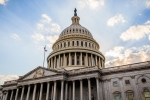Tax Insights: 2020 Federal Fall Economic Statement – Tax highlights
November 30, 2020
Issue 2020-39
In brief
On November 30, 2020, the Deputy Prime Minister and federal Minister of Finance, Chrystia Freeland, presented the 2020 Federal Fall Economic Statement (economic statement). The economic statement does not change personal or corporate income tax rates, but does:
- clarify proposed rules for the taxation of employee stock options, to be effective for stock options granted after June 30, 2021
- provide details for the Canada Emergency Wage Subsidy (CEWS), Canada Emergency Rent Subsidy (CERS) and Lockdown Support programs for December 20, 2020 to March 13, 2021
- announce a simplified home office tax deduction for 2020 for employees
- require non-resident vendors supplying digital products or services to consumers in Canada to register for Goods and Services Tax/Harmonized Sales Tax (GST/HST), effective July 1, 2021
This Tax Insights discusses these and other tax initiatives proposed in the economic statement.
In detail
Business tax measures
Employee stock options
The government plans to move ahead with new rules for the taxation of employee stock options, which will be effective for stock options granted after June 2021. These rules build on proposals released in 2019:
- imposing a $200,000 annual vesting limit (based on the value of an option’s underlying shares at the date of grant) on options that can qualify for the 50% employee stock option deduction
- introducing an employer deduction for the amount of stock option benefits that exceeds the new annual vesting limit, subject to certain conditions
Employees
The $200,000 limit applies to an employee on a calendar year basis, for each separate employer (but options issued by multiple non-arm’s length employers would have only one $200,000 limit). If the value of the stock to be acquired under options vesting in a year by an employee exceeds $200,000, the stock option deduction would not apply to taxable benefits realized on a related portion of those options.
The proposed new rules also clarify that an employee donating publicly listed shares acquired under a stock option that exceeds the $200,000 limit would not be eligible for the related stock option deduction. The employee should still be entitled to claim the charitable donation tax credit for the full value of the shares donated.
Employers
Provided that an employer complies with certain notification requirements, the portion of an employee’s stock option employment benefit in a year that does not qualify for the stock option deduction under these new rules would be deductible by the employer in that year. The employer could also elect to have this tax treatment apply for stock options below the $200,000 threshold.
The rules apply to options issued by an employer that, at the time the options are granted to an employee, is:
- a corporation or mutual fund trust, other than a Canadian-controlled private corporation, and
- a member of a group with consolidated gross revenues greater than $500 million*
* as reflected in the last annual consolidated financial statements presented to the shareholders or unitholders of the ultimate parent entity of that group
Employers not subject to the new rules will not be permitted to opt in to the new tax treatment.
Emergency business supports
The economic statement provides details for the CEWS, CERS and Lockdown Support programs for:
- period 11 – December 20, 2020 to January 16, 2021
- period 12 – January 17, 2021 to February 13, 2021
- period 13 – February 14, 2021 to March 13, 2021
Details for these programs for March 14, 2021 to June 30, 2021 will be provided at a later date.
Canada Emergency Wage Subsidy (CEWS) program
The government proposes to increase the maximum wage subsidy rate for active employees to 75% (from 65%) for periods 11 to 13. The maximum base subsidy remains 40%, but the top-up wage subsidy rate will increase to 35% (from 25%). As a result, employers who have experienced a revenue decline of 70% or more in their respective reference period will be eligible for a 75% wage subsidy rate for active employees, while employers who have experienced a revenue decline of between 50% and 70% will qualify for a combined wage subsidy rate of between 40% and 75% for these employees. The wage subsidy rate for other employers will remain unchanged at 80% of the revenue decline percentage.
Canada Emergency Rent Subsidy (CERS) and Lockdown Support programs
The government proposes to extend the current rate structure for the CERS and Lockdown Support programs to periods 11 to 13. As a result, for example, eligible entities that have experienced a revenue decline of 70% or more in their respective reference period will be eligible for a 65% CERS base subsidy rate, plus an additional 25% for the lockdown support.
The qualifying criteria and related rules for these programs will otherwise remain unchanged. For more information on the CEWS, CERS and Lockdown Support programs and details that apply for September 27, 2020 to December 19, 2020, see our Tax Insights “New Canada Emergency Rent Subsidy and revised Canada Emergency Wage Subsidy provide more relief to businesses and other organizations”.
Digital services tax
The government proposes to implement a tax on certain corporations providing digital services in Canada, effective January 1, 2022. This tax will apply until an acceptable common approach among the international community (led by the Organisation for Economic Co-operation and Development) comes into effect. Details will be announced in the 2021 federal budget.
Personal tax measures
Home office expenses
The economic statement announces that the Canada Revenue Agency (CRA) will permit a simplified home office expense deduction for employees working from home due to the COVID-19 pandemic in 2020. These employees will be allowed to deduct up to $400 (expected to be a per diem amount for the number of days working from home, up to this maximum), with no requirement to track or report detailed expenses. The CRA will generally not request that they provide a signed form T2200 from their employer. Further details will be announced by the CRA. For more information on deducting home office expenses, see our Tax Insights "Employee home office expenses during the COVID-19 pandemic - tax deductions."
Additional support for Canada Child Benefit (CCB) recipients
CCB recipients will receive four additional payments in 2021, of:
- $300 per child under the age of six, if their family net income is less than or equal to $120,000
- $150 per child under six, if their family net income is more than $120,000
The first payment will be made after the related legislation is enacted, with each of the other amounts to be paid by the end of the next three quarters. Like the CCB, these supplementary payments will be made to the child’s primary caregiver and will not be taxable or reduce benefits paid under the goods and services tax credit; nor will they be included in income for the purposes of federal income-tested programs delivered outside of the income tax system.
Sales tax measures
GST/HST relief for face masks and face shields
The government proposes to temporarily zero-rate supplies of certain face masks (medical and non-medical) and face shields designed for human use, effective for supplies made after December 6, 2020, until their use is no longer broadly recommended by public health officials for the COVID-19 pandemic.
GST/HST and the digital economy
To ensure the GST/HST system applies in a fair and efficient manner to the growing digital economy, the government proposes that, for supplies that generally become due (or made) after June 30, 2021:
- non-resident vendors supplying digital products or services (including traditional services) to consumers in Canada must register for GST/HST and collect and remit the tax to the CRA on their taxable supplies to Canadian consumers; a simplified GST/HST registration and remittance framework will be available to non-resident vendors and non‑resident distribution platform operators that are not carrying on business in Canada (e.g. have no permanent establishment in Canada)
- companies that run distribution platforms (e.g. Amazon) must register under the normal GST/HST rules and collect and remit the GST/HST on products that are sold by third-party vendors on those platforms and shipped through Canadian fulfillment warehouses (unless the vendor is already registered for GST/HST)
- companies that run short-term accommodation platforms (e.g. Airbnb) must collect and remit the GST/HST on accommodations offered through these platforms (unless the property owner is registered for GST/HST); a simplified GST/HST registration and remittance framework will be available to non-resident accommodation platform operators that are not carrying on business in Canada
Comments to the government on these three proposals are requested by February 1, 2021. For more information on these proposed new GST/HST rules, see our Tax Insights "New GST/HST regime for non‑resident vendors of digital products will be effective July 1, 2021."
Other measures
Improving tax fairness and strengthening compliance
The economic statement outlines the government’s initiatives to improve the fairness of Canada’s tax system, as follows:
- Employee stock options – see above
- Taxing unproductive use of Canadian housing by foreign non-resident owners – taking steps over the coming year to implement a national, tax-based measure that targets the unproductive use of domestic housing that is owned by non-resident non-Canadians
- Strengthening tax compliance – spending an additional $606 million over 5 years, starting in 2021-22, to fund new initiatives and extend existing programs targeting international tax evasion and aggressive tax avoidance
- Modernizing anti-avoidance rules – launching consultations in the coming months on the modernization of Canada’s anti-avoidance rules, including the General Anti-Avoidance Rule (GAAR)
Contact us





















